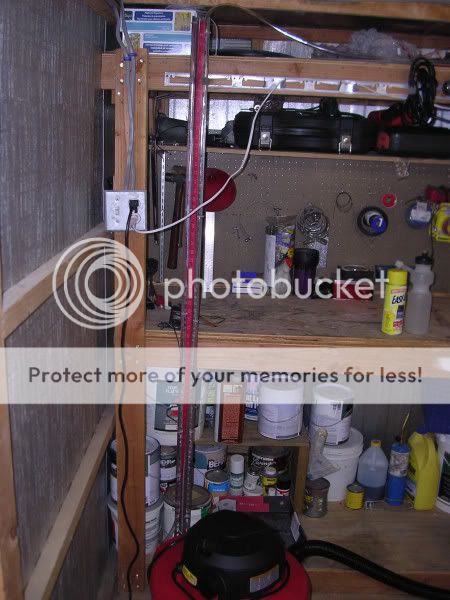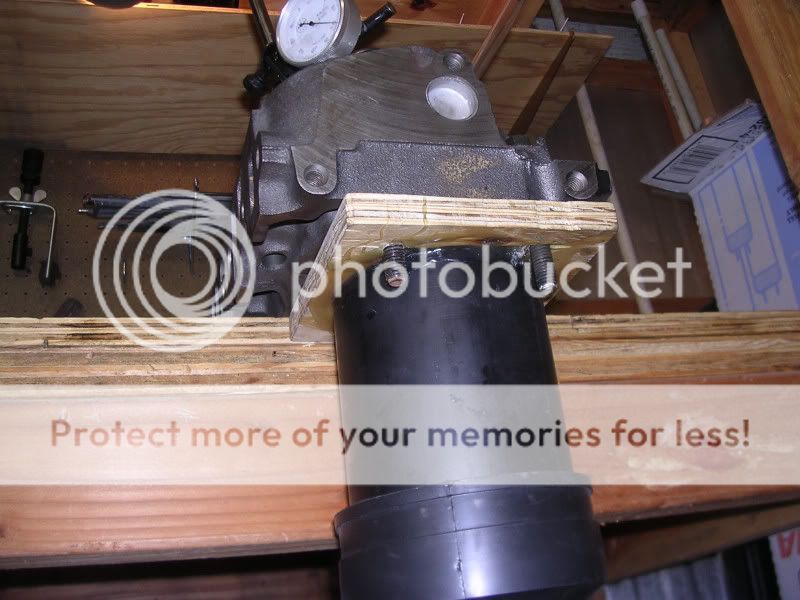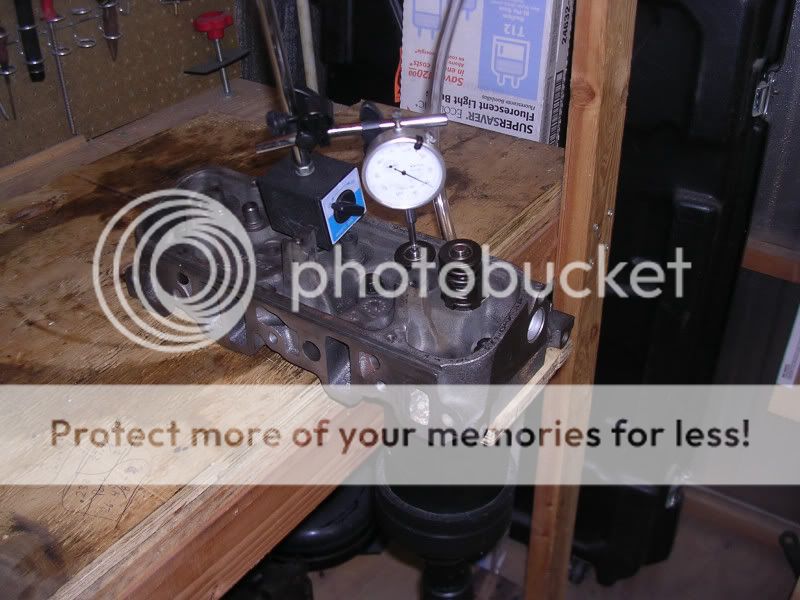Turbofabricator mentioned Gofastnews.com in one of his replies to my head porting questions. Turns out David Vizard has been posting a series of head porting articles on that site. A few of them deal with building your own home flow bench.
When I saw the simple DIY flowbench he detailed in the first flowbench article I just had to build it. Here is the article Porting School #2 - Super Cheap Flow Bench - GoFastNews.com - All Racing News All the Time!
So off I went to the hardware store. I picked up a shop vac, I needed one anyway, and then I purchased some clear 3/8ths hose and a piece of angle something or other that I dont have a good name for. I made a manometer with this, some zip ties, and a measuring tape.

It's about 60 inches long so I made the midway point at 30 inches

I then had to fab up an adapter and bore plate for the head. I did this out of wood, I then epoxied in some 4" schedule 40 pvc pipe into this thing. Yes the bore is 4" which is a little bigger than the 3.8 bore but for what I'm doing this is close enough. I also used the epoxy to form some threads that I tapped directly into the wood since there wasnt really any space for a nut. This actually works really well.


The rubber coupling at the bottom is just a 4" to.. about a 2" opening.. i cant remember exactly. PVC pipe and couplers have a completely moronic way of being measured that has no bearing on its actual size. This was probably the most expensive part of the flowbench at 14 dollars (aside from the shop vac and dial micrometer)
Connected the manometer to the spark plug hole with an air tool fitting (I just hand tighten it with teflon tape. It doesn't leak... I'll get a fitting from a compression tester or some such thing later)

and then I just let it rip

I compared a stock head to a head I've been porting. To my dismay, at .233 lift, the stock head flowed like 1/32nd of an inch more than my ported head.
I then upped the lift to .425 and the difference between the stock head and the ported head became very pronounced. The ported head flowed a full inch of water more than the stock head. That's a lot considering that there was only about 2.5 inches of vacuum in total. That's like a 33% improvement over stock
At .655 lift (just for kicks) the stock head was still an inch behind. The difference in flow from .655 from .425 wasn't a lot. Only about 1/8th inch.
Here are a couple of picts of the ported head in question. I'm still not done with it. I need to do some smoothing and chamber work. BTW, nothing at all has been done to the actual port entry of the head aside from removing the hump around the head bolt hole. No gasket matching of any kind or anything like that. I'd say 85% of my grinding was in the bowl, valve guide area


I'm gonna have to build or buy a more precise manometer for the higher lift readings. There isn't as much resolution as I would like. At low lift there is a ton though.
I'm pretty happy with the set up. I just need to figure out a way to open the valve more precisely/ easily. I was thinking two threaded sleeves under the keeper that I screw to raise and lower the valve. Any one have any better ideas?
When I saw the simple DIY flowbench he detailed in the first flowbench article I just had to build it. Here is the article Porting School #2 - Super Cheap Flow Bench - GoFastNews.com - All Racing News All the Time!
So off I went to the hardware store. I picked up a shop vac, I needed one anyway, and then I purchased some clear 3/8ths hose and a piece of angle something or other that I dont have a good name for. I made a manometer with this, some zip ties, and a measuring tape.

It's about 60 inches long so I made the midway point at 30 inches

I then had to fab up an adapter and bore plate for the head. I did this out of wood, I then epoxied in some 4" schedule 40 pvc pipe into this thing. Yes the bore is 4" which is a little bigger than the 3.8 bore but for what I'm doing this is close enough. I also used the epoxy to form some threads that I tapped directly into the wood since there wasnt really any space for a nut. This actually works really well.


The rubber coupling at the bottom is just a 4" to.. about a 2" opening.. i cant remember exactly. PVC pipe and couplers have a completely moronic way of being measured that has no bearing on its actual size. This was probably the most expensive part of the flowbench at 14 dollars (aside from the shop vac and dial micrometer)
Connected the manometer to the spark plug hole with an air tool fitting (I just hand tighten it with teflon tape. It doesn't leak... I'll get a fitting from a compression tester or some such thing later)

and then I just let it rip

I compared a stock head to a head I've been porting. To my dismay, at .233 lift, the stock head flowed like 1/32nd of an inch more than my ported head.
I then upped the lift to .425 and the difference between the stock head and the ported head became very pronounced. The ported head flowed a full inch of water more than the stock head. That's a lot considering that there was only about 2.5 inches of vacuum in total. That's like a 33% improvement over stock
At .655 lift (just for kicks) the stock head was still an inch behind. The difference in flow from .655 from .425 wasn't a lot. Only about 1/8th inch.
Here are a couple of picts of the ported head in question. I'm still not done with it. I need to do some smoothing and chamber work. BTW, nothing at all has been done to the actual port entry of the head aside from removing the hump around the head bolt hole. No gasket matching of any kind or anything like that. I'd say 85% of my grinding was in the bowl, valve guide area


I'm gonna have to build or buy a more precise manometer for the higher lift readings. There isn't as much resolution as I would like. At low lift there is a ton though.
I'm pretty happy with the set up. I just need to figure out a way to open the valve more precisely/ easily. I was thinking two threaded sleeves under the keeper that I screw to raise and lower the valve. Any one have any better ideas?